Member of Martial-Arts HyperBanner


This page contains my Martial Art History. The following arts are systems and techniques I've come across and absorbed into my "personal" style of JKD. Jeet Kune Do is an individual art, it must suit the individual, one must feel comfortable and fluid in the art. So in turn, through dabbling with several arts there are things I use that are specifically "Bevan" for lack of a better term. I hope this will shed some light on where I am coming from and where I am trying to go.
-- "SIFU" Bevan Bell

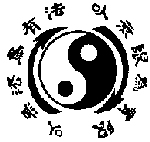 JEET KUNE DO: Jeet Kune Do is an art for the individual. As I have written before, the art was made to expand. The art consisted of several techniques from several styles. This was the art in which Bruce made to be fluid, no set patterns or set movements. He wanted an art that was as fluid as water and as effective and unpredictable as the anchient arts used to be. Jeet Kune Do was built on top of Bruce's base art Wing Chun Gung-Fu (which can be seen through many of the techniques, trapping, etc). The philosophies of Jeet Kune Do is what brought me to where I am today.
JEET KUNE DO: Jeet Kune Do is an art for the individual. As I have written before, the art was made to expand. The art consisted of several techniques from several styles. This was the art in which Bruce made to be fluid, no set patterns or set movements. He wanted an art that was as fluid as water and as effective and unpredictable as the anchient arts used to be. Jeet Kune Do was built on top of Bruce's base art Wing Chun Gung-Fu (which can be seen through many of the techniques, trapping, etc). The philosophies of Jeet Kune Do is what brought me to where I am today.
1. Research you own experiences for the truth.
2. Absorb what is useful.
3. Reject what is useless.
4. Add specifically what is your own.
 JUN FAN MARTIAL ARTS: Jun Fan is Bruce Lee's chinese name. Jun Fan Martial Arts can't necessarily be separated from Jeet Kune Do, but it can be divided into three different aspects of fighting.. all of which are wrapped together in a form of fighting that was a middle point between Jeet Kune Do concepts and Bruce Lee's beginnings as a martial artist.
JUN FAN MARTIAL ARTS: Jun Fan is Bruce Lee's chinese name. Jun Fan Martial Arts can't necessarily be separated from Jeet Kune Do, but it can be divided into three different aspects of fighting.. all of which are wrapped together in a form of fighting that was a middle point between Jeet Kune Do concepts and Bruce Lee's beginnings as a martial artist.
--Jun Fan Kick Boxing
Jun Fan Kick Boxing mainly involves techniques and training methods from Muay Thai, Western Boxing, Filipino Boxing, French Savage and Western Foil Fencing. The range of this division is usually middle or long range attack.
--Jun Fan Grappling
Another major part of the the Jun Fan Martial Arts is the use of Grappling techniques. As with the kick
boxing phase there is a wide variety of offensive and defensive methods taught.
The Grappling range has five areas of concentration:
1)Locking and Submission
2)Choking and Strangulation
3)Pressure Point and Pain Compliance
4)Time Holds
5)Ground Hitting Tactics
This part of the Jun Fan Martial Arts can be a very important factor in self defence. As many "real life" self defence situations can end up on the ground. This division of the Jun Fan Martial Arts is close range combat.
The techniques that are used come again from a variety of different grappling arts from around the world
including and free style wrestling as well as Russian Sombo Judo and Jujitsu.
--Jun Fan Gung Fu
This section of our training involves the use of close in trapping and striking techniques. Which is when
the range of the fight has to a stage where the kick boxing techniques would not be effective. The main sources for this part of the art are Wing Chun and the unarmed methods of the Filipino Martial Arts. At this range the practioner should be trying for a more tactile response to their opponent. This means that because of the close range at which they will find themselves the practioner should be able to "read" their opponents responses and reply with the necessary techniques. This is a difficult area to describe,as it is one of those arts that you need experience in order to fully appreciate the concepts involved. This division of Jun Fan Martial Arts deals with the close and medium ranges of combat; and is one of the most important aspects of Martial Arts I have learned. this area also deals with such internal aspects as chi focusing.
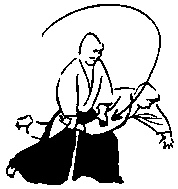 AIKIDO: When finding different essential arts and dynamics for Aesthetic JKD, I found some of the more comercialized styles to get a feel of things. Aikido is rather popular and I enjoyed the training. I felt it necessary to add, for the art is a fluid art that uses the opponents energy against him. The techniques consist of wrist locks, throws, etc. and they are very effective for setting any sized opponent down. I would recommend this art for anyone wanting to easily attack and escape from wrist locks, arm bars, pins, etc.
AIKIDO: When finding different essential arts and dynamics for Aesthetic JKD, I found some of the more comercialized styles to get a feel of things. Aikido is rather popular and I enjoyed the training. I felt it necessary to add, for the art is a fluid art that uses the opponents energy against him. The techniques consist of wrist locks, throws, etc. and they are very effective for setting any sized opponent down. I would recommend this art for anyone wanting to easily attack and escape from wrist locks, arm bars, pins, etc.
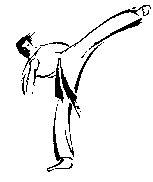 TAEKWONDO: Taekwondo is another art that is very commercialized. The art was added for the wide ranges of kicks and the simple reason that it was a base art for my martial arts beginnings. Though I find the techniques to be rigid, I have kept certain techniques that flow easily with any art like the ridge hand. Although alot of the kicks, especially high kicks, are not practical, it is good to get a range of combat for kicks.
TAEKWONDO: Taekwondo is another art that is very commercialized. The art was added for the wide ranges of kicks and the simple reason that it was a base art for my martial arts beginnings. Though I find the techniques to be rigid, I have kept certain techniques that flow easily with any art like the ridge hand. Although alot of the kicks, especially high kicks, are not practical, it is good to get a range of combat for kicks.
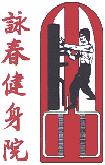 WING CHUN: While studying Jeet Kune Do you must learn the essentials of Bruce's base art, Wing Chun. Wing Chun is a very quick and effective art that traps the opponents strikes and moves around to open the opponent up making him voulnerable to attack. Wing Chun is one of the best arts I've studied yet and an art that can always be used for a fall back plan. Many of the techniques involve multiple simultaneous attacks with the legs and hands. This allows you to be unpredictable and always dangerous.
WING CHUN: While studying Jeet Kune Do you must learn the essentials of Bruce's base art, Wing Chun. Wing Chun is a very quick and effective art that traps the opponents strikes and moves around to open the opponent up making him voulnerable to attack. Wing Chun is one of the best arts I've studied yet and an art that can always be used for a fall back plan. Many of the techniques involve multiple simultaneous attacks with the legs and hands. This allows you to be unpredictable and always dangerous.
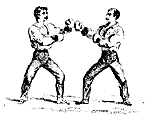 SAVATE: While studying the different ranges of the JKD family you find different practicioners and varous sifus that have different beginnings in the Martial Arts. Savate is an art that I followed to get a better feel of the others that have come before me. Savate is another art that is very good for kicking ranges and is similar to techniques used in Muay Thai. To tell the truth it is basically the French version of Muay Thai. But do not close your mind to other arts, the arts differ in ways and that's why there are different arts.
SAVATE: While studying the different ranges of the JKD family you find different practicioners and varous sifus that have different beginnings in the Martial Arts. Savate is an art that I followed to get a better feel of the others that have come before me. Savate is another art that is very good for kicking ranges and is similar to techniques used in Muay Thai. To tell the truth it is basically the French version of Muay Thai. But do not close your mind to other arts, the arts differ in ways and that's why there are different arts.
 MUAY THAI: Mauy Thai is Thailand's brutal fighting art that carries the pride of the country on it's back. The art is one that I find essential to add as Bruce felt the same way. The arts basic techniques consist of American boxing techniques with shin kicks, knees, elbows, headbutts, heel strikes, etc. Like I said.. brutal.
MUAY THAI: Mauy Thai is Thailand's brutal fighting art that carries the pride of the country on it's back. The art is one that I find essential to add as Bruce felt the same way. The arts basic techniques consist of American boxing techniques with shin kicks, knees, elbows, headbutts, heel strikes, etc. Like I said.. brutal.
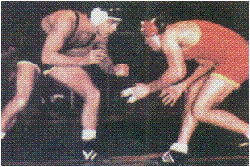 GRECO ROMAN WRESTLING: I was introduced to wrestling or "grappling" in my 8th grade year of school. It was the first grappling art that I had encountered and I fell in love with it. To this day I still pin my brother in classical techniques I learned a good six years ago.
GRECO ROMAN WRESTLING: I was introduced to wrestling or "grappling" in my 8th grade year of school. It was the first grappling art that I had encountered and I fell in love with it. To this day I still pin my brother in classical techniques I learned a good six years ago.
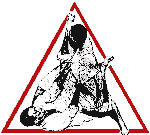 JUJITSU: After using the classical wrestling techniques for so many years, I saw a man named Gracie. This family changed my whole perspective on the art of grappling. The art helped in being more comfortable on the groung in any situation, because everyone knows that if a fight lasts more that :40 seconds it is going to the ground. A grappling style is necessary for any complete fighter.
JUJITSU: After using the classical wrestling techniques for so many years, I saw a man named Gracie. This family changed my whole perspective on the art of grappling. The art helped in being more comfortable on the groung in any situation, because everyone knows that if a fight lasts more that :40 seconds it is going to the ground. A grappling style is necessary for any complete fighter.
 RYU KEMPO: I added Ryu Kempo to the many styles of Aesthetic JKD because of a seminar I viewed on tape of George Dillman. The man is amazing in knockout techniques. The system is similar to the Chinese DIM MAK and Eagle Claw Kung-fu. The system screws with the opponent's nervous system and energy meridians. This was an addition that put me in awe.
RYU KEMPO: I added Ryu Kempo to the many styles of Aesthetic JKD because of a seminar I viewed on tape of George Dillman. The man is amazing in knockout techniques. The system is similar to the Chinese DIM MAK and Eagle Claw Kung-fu. The system screws with the opponent's nervous system and energy meridians. This was an addition that put me in awe.
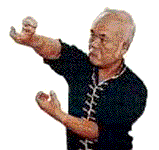 EAGLE CLAW: The addition of Eagle Claw Kung-Fu was a dabble with several styles of traditional Chinese Kung-Fu systems. This was another art in my dabblings with pressure point fighting, seizure, and knock out techniques.
EAGLE CLAW: The addition of Eagle Claw Kung-Fu was a dabble with several styles of traditional Chinese Kung-Fu systems. This was another art in my dabblings with pressure point fighting, seizure, and knock out techniques.
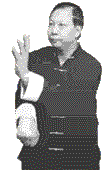 WHITE EYEBROW: White Eyebrow Gung-Fu is an art that I dipped into chasing my quest for the homeland in traditional martial arts. This was an art that I wanted to use as a fallback system in case something failed. The art is just another book of wisdom in the library of Aesthetic Jeet Kune Do.
WHITE EYEBROW: White Eyebrow Gung-Fu is an art that I dipped into chasing my quest for the homeland in traditional martial arts. This was an art that I wanted to use as a fallback system in case something failed. The art is just another book of wisdom in the library of Aesthetic Jeet Kune Do.
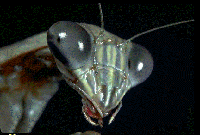 TAIMANTIS: Taimantis is a version of Mantis style Kung-Fu that I found information about more easily. It's not your traditional style of Shaolin Mantis, which I also looked into when finding a Mantis style. I liked the idea of the shaolin animals being added to the arts I use. The animal forms keep the fight unpredictable as well as the vicious strikes of the Mantis and the speed it takes to use it.
TAIMANTIS: Taimantis is a version of Mantis style Kung-Fu that I found information about more easily. It's not your traditional style of Shaolin Mantis, which I also looked into when finding a Mantis style. I liked the idea of the shaolin animals being added to the arts I use. The animal forms keep the fight unpredictable as well as the vicious strikes of the Mantis and the speed it takes to use it.
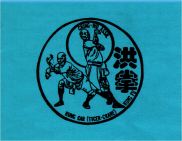 HUNG GAR: Hung Gar Gung-Fu is another style of traditional Kung-Fu I was chasing after. It also assisted me in the search for animal styles. Hung Gar Kung-Fu is an art which mixed the Tiger and Crane techniques. The art was also one of Wong Fei-Hung's techniques which he used his shadowless kick.
HUNG GAR: Hung Gar Gung-Fu is another style of traditional Kung-Fu I was chasing after. It also assisted me in the search for animal styles. Hung Gar Kung-Fu is an art which mixed the Tiger and Crane techniques. The art was also one of Wong Fei-Hung's techniques which he used his shadowless kick.
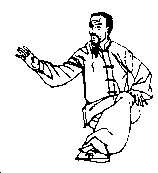 WUSHU: Wushu was another search for a traditional Chinese Martial art. Wushu is now China's national art and holds the responsibility of bringing the Martial Arts back to life. Wushu is an acrobatic art that is used for show as well as it' s effectiveness in combat. The wide range of weapon's techniques made the art a definite yes to study.
WUSHU: Wushu was another search for a traditional Chinese Martial art. Wushu is now China's national art and holds the responsibility of bringing the Martial Arts back to life. Wushu is an acrobatic art that is used for show as well as it' s effectiveness in combat. The wide range of weapon's techniques made the art a definite yes to study.
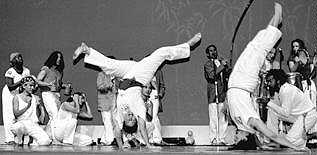 CAPOERIA: Capoeria is a Brazilian style of Kung-Fu that was devised by slaves that worked in the sugar cane fields. The wanted a fighting art to be prepared for a slave uprising and hid the art within a dance called a "Jenga," which is also the ready position for the art. The art is very acrobatic, and most opponents have no idea what the hell is going on.
CAPOERIA: Capoeria is a Brazilian style of Kung-Fu that was devised by slaves that worked in the sugar cane fields. The wanted a fighting art to be prepared for a slave uprising and hid the art within a dance called a "Jenga," which is also the ready position for the art. The art is very acrobatic, and most opponents have no idea what the hell is going on.
 DRUNKEN BOXING: The addition of Drunken Fist Boxing to the names of Aesthetic JKD is due completely to Jackie Chan. After seeing his DRUNKEN MASTER films I, as well as many of my friends, fell in love with the art. It seems everytime I get together with the same group of friends, they always want me to cycle through the 8 drunken goddesses. I have been on a quest to find more information on the art but the only way to learn the techniques was from video's and Jackie's movies.
DRUNKEN BOXING: The addition of Drunken Fist Boxing to the names of Aesthetic JKD is due completely to Jackie Chan. After seeing his DRUNKEN MASTER films I, as well as many of my friends, fell in love with the art. It seems everytime I get together with the same group of friends, they always want me to cycle through the 8 drunken goddesses. I have been on a quest to find more information on the art but the only way to learn the techniques was from video's and Jackie's movies.

[Return to Main Page]
[To the On-Line Instruction]
[To the Wisdom of Kung-Fu Page
[To the Page of Japanese Fighting Arts]
[To Jackie Chan's Filmography and Analysis]
[To the Bruce Lee Kung-Fu Filmography]
[To Brandon Lee's Filmography]
[To the Picture Archives]
[To the Page of the Etenal Tao]
[To the Page O' Links]
[All about me]
[Home of THE TARGET]
This page hosted by  Get your own Free Home Page
Get your own Free Home Page